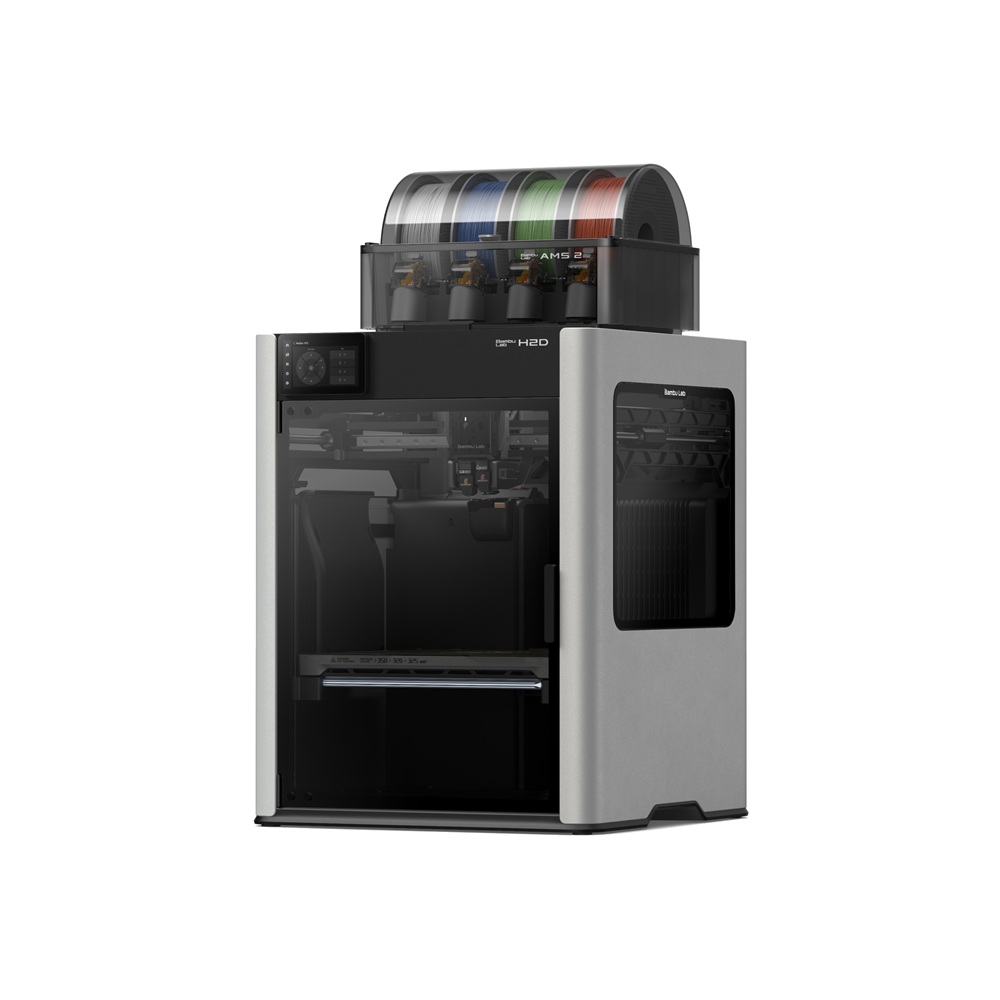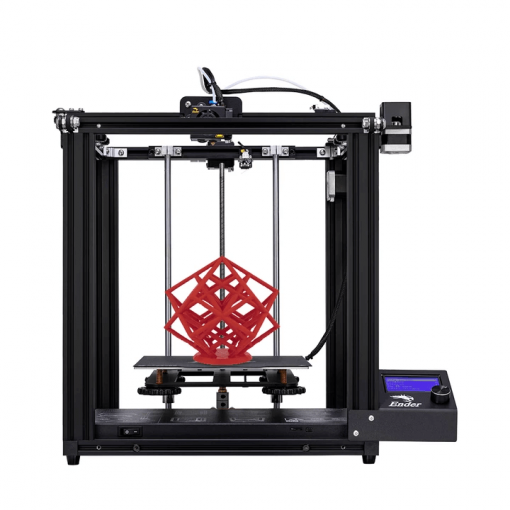Compare H2D vs Ender 5
Comparison between the best 3D printers
Choose the best 3D printer at the best price. The cheapest 3D printers are here.
Buy a 3D printer here with 3D Fila.
 |
 |
|
| Model | H2D |
Ender 5[BUY Ender 5] |
| Printing Material | Filament | Filament |
| Buy Filament for Bambu Lab H2D | Buy Filament forCreality 3D Ender 5 | |
| Estimated price | $1899,00 | $399,00 |
| Manufacturer | Bambu Lab | Creality 3D |
| Release Year | 2025 | 2020 |
| Print Volume [mm] | 350x320x325 | 220x220x300 |
| Printer Size [mm] | 492x514x626 | 485x510x552 |
| Weight [kg] | 42,3 | 11,8 |
| Power Loss Recovery | YES | YES |
| Enclosed printer | YES | NO |
| Bed Leveling | Automatic | Manual |
| Filament End Sensor | YES | NO |
| Bed type | Heated | Heated |
| Power supply system | Direct Drive | Bowden |
| Standard nozzle | 0,4 | 0,4 |
| Maximum Nozzle Temperature [°C] | 350 | 255 |
| Maximum Bed Temperature [°C] | 120 | 100 |
| Maximum printing speed [mm/s] | 600 | 180 |
| Filament holder | YES | YES |
| Camera for supervision | YES | YES |
| Recommended filaments | PLA, PETG, ABS, ASA, TPU, PVA, Nylon (PA) | PLA, TPU, ABS, PETG |
| Recommended slicers | Bambu Studio | Cura, Simplify, Slic3r |
| Maximum Resolution [mm] | 0,01 | 0,1 |
| Processor | 32 bits | |
| Display | Touchscreen 5'' | Mono |
| Power Supply | 24V / 360W | |
| Connectivity | Wifi, Bambu bus, Cartão SD | SD / USB |
| Operating systems | Windows, Mac, Linux | Windows, Mac, Linux |
| Date of registration in the system | 2025-03-31 | 2021-04-15 |
| Release date | 2025 | 2020 |
| Extra features | Bambu Labs H2D combines high-speed 3D printing with a chamber heated up to 65 °C, dual extrusion with automatic nozzle switching, an AMS for filament drying and exchange, and AI sensors that detect failures. It offers optional laser and digital cutting capabilities, features intelligent calibration through computer vision, vibration control, enhanced fire safety, and real-time camera monitoring. | Crealitys Ender 5 stands out with a solid frame and a larger 220 x 220 x 300mm print volume. Its assembly is simple and quick, offering high print quality and speeds of up to 80mm/s. With a magnetic bed, it makes it easy to remove prints. Notable for being hackable and expandable, the Ender 5 continues Crealitys innovative tradition in the affordable 3D printer market. Equipped with a 350W/24V Meanwell power supply, it heats up quickly, in addition to having efficient cable management and modified Marlin firmware. Its unique design includes dedicated stepper motors for each axis and smooth movement on the Y axis, providing more consistent and detailed prints. |
| Support for multiple colors and materials (AMS and CFS) | YES | NO |
Notes * |
||
| Cost-benefit | 7 / 10 | 7 / 10 |
| Hardware | 8 / 10 | 1.5 / 10 |
| Tela | . | . |
| Print volume | 4 / 10 | 3 / 10 |
| Performance | 5 / 10 | 1 / 10 |
| [BUY Ender 5] |
Conclusion |
| In comparing the Bambu Lab H2D and the Creality Ender 5, we observe several key differences that will resonate with different user needs and preferences. The H2D, designed for advanced users, offers impressive specifications such as a larger print volume, higher maximum print speed, and advanced features including automatic bed leveling, a dual extrusion system, and AI sensors for detecting failures. Its enclosed design and comprehensive materials compatibility position it as a robust choice for professional or serious enthusiasts aiming to tackle intricate projects. The integration of smarter technology and enhanced thermal management, along with a touch display for easier navigation, indicates a significant investment geared towards high-quality outputs and user experience. Conversely, the Ender 5 offers a more accessible and budget-friendly option without compromising the essentials of 3D printing. While it features a smaller print volume and requires manual bed leveling, it remains a popular choice due to its solid construction, ease of assembly, and hackability. The Ender 5 is particularly suited for beginners or hobbyists looking for quality prints at a lower price point, making it a great entry-level printer. Ultimately, the choice between these two models will depend on the user's budget, experience level, and specific printing needs. For those seeking cutting-edge technology and capabilities, the H2D is the clear frontrunner. However, for users who prioritize affordability and simplicity, the Ender 5 remains a commendable option. Each printer has its strengths, making both viable contenders in the 3D printing market. |

